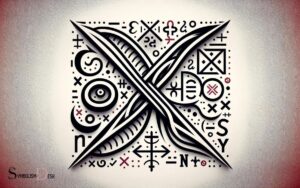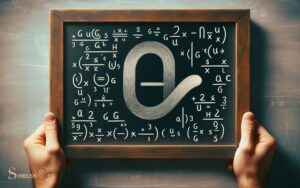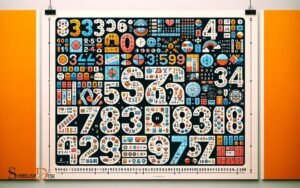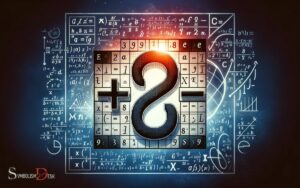Math Symbols for Number Sets: Explanations!
Mathematical symbols for number sets are essential tools for identifying and categorizing various groups of numbers.
They encompass a wide range of numerical categories from the simplest natural numbers to the more complex real and imaginary numbers. Recognizing these symbols is key to understanding and working with different types of numbers in mathematics.
Number sets in mathematics have specific symbols that signify the entire set of numbers within that category.
For instance:
Recognizing number set symbols is a fundamental skill in mathematics, aiding in the precise expression of mathematical ideas.
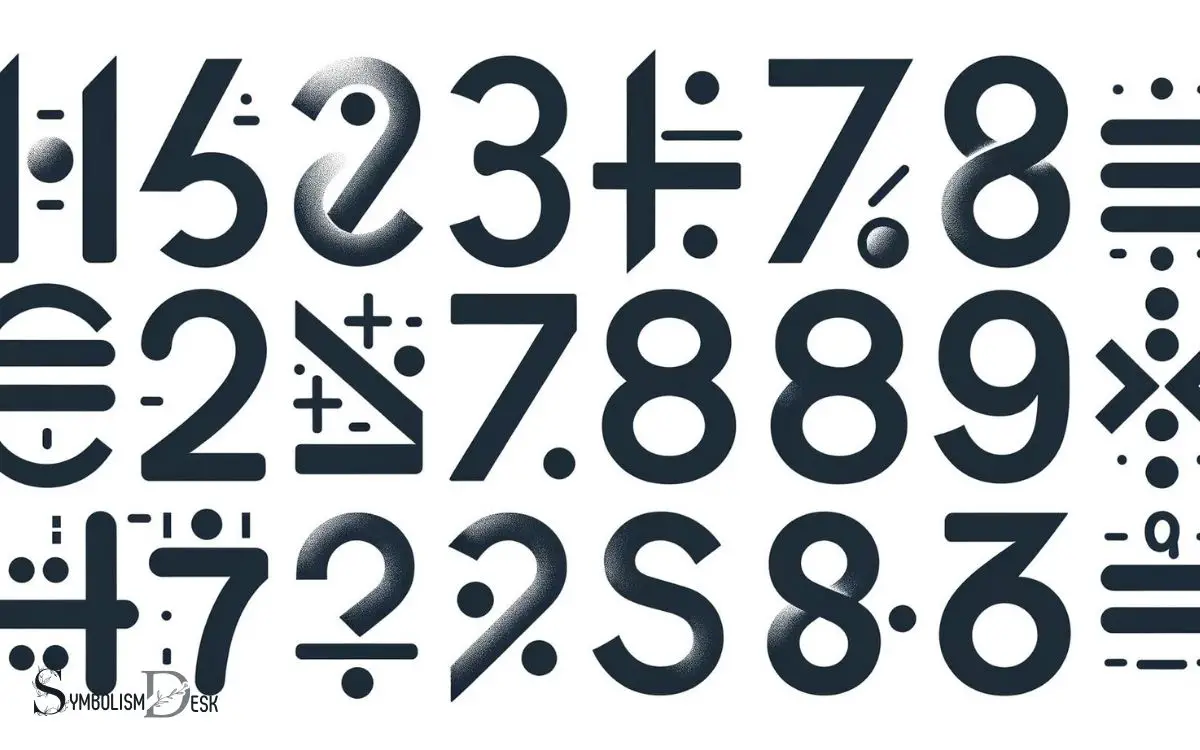
Key Takeaway
Natural Numbers
The set of natural numbers, denoted by the symbol N, encompasses all positive integers starting from 1 and extending to infinity. Natural numbers are used to count objects and are fundamental in various mathematical concepts.
They form the building blocks for other number sets and mathematical operations. Natural numbers cannot be negative or fractions, and they are represented as {1, 2, 3, 4, …}. In set notation, N = {1, 2, 3, …}.
Understanding natural numbers is crucial for comprehending the basic principles of arithmetic and number theory.
Integers
The concept of integers encompasses negative whole numbers, including zero, and positive whole numbers. Integers do not include fractional or decimal numbers.
Understanding the properties and operations of integers is fundamental in various mathematical disciplines, including algebra and number theory.
Negative Whole Numbers
Negative whole numbers, also known as integers, are an important part of the number set in mathematics. They are represented as the set of numbers {…, -3, -2, -1}. Integers include all the natural numbers (1, 2, 3, …) as well as their additive inverses (−1, −2, −3, …).
They are crucial in various mathematical operations and real-life applications, such as in accounting (for representing debts), temperature measurements (below zero), and in many other contexts.
Integers are essential in various mathematical operations and real-life applications. Understanding and working with negative whole numbers are fundamental in mathematics and other fields where quantitative analysis is required.
No Fractional or Decimal
Fractions and decimals are not included in the set of integers, which solely consists of whole numbers and their additive inverses.
- Understanding the exclusion of fractions and decimals may feel limiting, but it provides a clear and distinct set of numbers to work with.
- While it may seem restrictive, the concept of integers allows for focused study and problem-solving.
- Recognizing the boundary between integers and other number sets can evoke a sense of clarity and precision in mathematical operations.
- The absence of fractions and decimals in the set of integers can evoke a sense of purity and simplicity, making it easier to comprehend and work with these numbers.
This distinction sets the stage for the subsequent section about ‘rational numbers’, where we will explore the inclusion of fractions and decimals within the number set framework.
Rational Numbers
Rational numbers can be expressed as the quotient of two integers. They can be written in the form p/q, where p and q are integers and q is not equal to 0. Rational numbers include fractions and integers since every integer can be expressed as a fraction with a denominator of 1.
Rational numbers can be positive, negative, or zero. They can also be recurring or terminating decimals.
When represented on a number line, rational numbers occupy specific, finite positions. The set of rational numbers is denoted by the symbol Q.
Understanding rational numbers is fundamental in various mathematical concepts, including algebra, calculus, and number theory.
Their properties and operations play a crucial role in solving practical problems and theoretical proofs in diverse fields of mathematics.
Real Numbers
Real numbers encompass a wide range of mathematical entities, including both rational and irrational numbers. They are characterized by their ability to be represented on the number line as points, each corresponding to a unique position.
The properties of real numbers play a fundamental role in various mathematical operations and provide a foundation for advanced mathematical concepts.
Real Numbers Definition
Real numbers are defined as the set of all numbers that can be represented on the number line. This includes both rational numbers, which can be expressed as a fraction, and irrational numbers, which cannot be expressed as a fraction and have non-repeating decimal expansions.
The concept of real numbers encompasses a wide range of values, from negative infinity to positive infinity, and includes familiar numbers such as integers, fractions, and decimals.
Understanding the nature of real numbers is fundamental in various mathematical fields, such as calculus, analysis, and geometry.
It provides a foundation for comprehending the continuous nature of quantities and the infinite precision required in many scientific and mathematical applications.
Real numbers form the basis for modeling and understanding the physical world, making them a cornerstone of mathematical study.
Properties of Real Numbers
The properties of numbers on the number line provide fundamental principles for mathematical operations and relationships. Real numbers exhibit several key properties, including closure, commutativity, associativity, distributivity, identity, and inverses.
The closure property states that the sum or product of any two real numbers is also a real number. Commutativity indicates that the order of addition or multiplication does not affect the result.
Associativity implies that the grouping of numbers in addition or multiplication does not change the outcome. Distributivity governs the relationship between addition and multiplication.
The existence of additive and multiplicative identities means that for any real number, there exists an element such that the sum or product with the identity yields the original number.
Furthermore, every real number has an additive and multiplicative inverse, except for zero. Understanding these properties is essential for comprehensive mathematical reasoning and problem-solving.
Real Numbers Examples
Examples of real numbers can be found in various mathematical contexts, illustrating the practical application of the properties discussed earlier.
Real numbers include familiar numbers like 3, 0.5, and -1, as well as less obvious ones like √2 and π.
These numbers are used in everyday measurements, such as the length of a bookshelf (3 feet), the weight of an apple (0.5 pounds), or the temperature outside (-1 degree Celsius).
Real numbers also appear in more complex mathematical concepts, such as the distance between two points on a coordinate plane or the solutions to a quadratic equation.
Understanding real numbers is essential for grasping the fundamental principles of mathematics, providing a foundation for solving real-world problems and unlocking the mysteries of the universe.
Complex Numbers
Complex numbers are a fundamental concept in mathematics, representing numbers in the form a + bi, where ‘a’ and ‘b’ are real numbers and ‘i’ is the imaginary unit.
One way to represent complex numbers is through a table, as shown below:
| Type | Representation | Example |
|---|---|---|
| Real | a + 0i | 5 + 0i |
| Imaginary | 0 + bi | 0 + 3i |
| Complex | a + bi | 2 + 3i |
| Conjugate | a – bi | 2 – 3i |
In this table, ‘a’ and ‘b’ stand for real numbers, and ‘i’ represents the imaginary unit. The table illustrates the different types of complex numbers and provides examples for each type, offering a comprehensive understanding of their representations.
Imaginary Numbers
Discussing the representation of imaginary numbers involves understanding their role in mathematical operations and applications.
Imaginary numbers, denoted as a multiple of the imaginary unit “i,” are essential in various mathematical contexts, including electrical engineering, quantum mechanics, and signal processing.
To evoke emotion in the audience, consider the following points:
- Imaginary numbers can initially seem perplexing but offer a fascinating insight into the depth and beauty of mathematical abstraction.
- The concept of imaginary numbers challenges conventional understanding, igniting a sense of curiosity and wonder about the boundless nature of mathematics.
- Despite initial skepticism, grasping the significance of imaginary numbers can evoke a sense of intellectual achievement and appreciation for the elegance of mathematical concepts.
Understanding imaginary numbers enriches one’s perception of the interconnectedness and intricacy of mathematical systems, fostering a profound appreciation for the discipline’s complexity.
Conclusion
The mathematical symbols for number sets serve as the foundation for understanding the abstract and interconnected nature of mathematics.
Each set represents a unique realm of numbers, with its own properties and relationships. Just as different ecosystems in nature support diverse forms of life, these number sets provide the structure and framework for mathematical concepts to thrive and evolve.
Understanding and mastering these symbols is essential for navigating the complex terrain of mathematics.

